This post and the photos within it may contain affiliate links. If you purchase something through the link, I may receive a commission at no extra charge to you.
In this article, I will teach you everything I know about calligraphy paper.
Calligraphy paper is extremely important and can have a tremendous impact on your calligraphy as well as your tools.
There are many different types of papers out there, and finding the right one can get overwhelming.
So if you want to learn more about calligraphy papers, you’ve come to the right place.
Here is a quick overview of what you’ll learn in this guide –
- Why does calligraphy paper matter?
- Calligraphy practice paper vs. Calligraphy paper for special projects
- Papers to avoid when doing calligraphy
- Eco-friendly papers for calligraphy
- FAQ – common questions about calligraphy paper
Let’s dive right in.
Note – If you’re just getting started with calligraphy, I highly recommend you check out my ultimate guide for calligraphy beginners.
Why does calligraphy paper matter?
Working with the wrong type of paper can ruin the look of your calligraphy, damage your tools, and slow your progress.
Here’s a quick story.
Imagine you just bought a brand-new car.
That car can more or less drive anywhere.
However, what happens if you take your new car off-road somewhere?
The car can still drive, but it goes very slowly, you’re not very comfortable, and it’s just a matter of time before you damage a vital part.
You can render a brand-new car into a piece of junk rather quickly.

On the other hand, if you drive your car on a regular (car-made) road, you can move pretty quickly (and comfortably), and your car will last for years.
Well, it’s fairly similar to your calligraphy pens and papers.
The most common issues when using the wrong calligraphy paper
Here are a few common issues you can encounter when you use the wrong calligraphy paper.
1. Ink bleeding occurs when the ink soaks on the paper and starts showing on the other side. It might even leave a mark on the page or surface underneath.

2. Ink feathering – happens when the paper fibers absorb much of the ink and they dont hold it in place. It then starts spreading through capillary action, completely ruining the look of your calligraphy.

Note – bleeding and feathering can also be caused by the ink.
3. Paper fibers catching onto the nib – when small pieces of paper start catching on the edges of your nib. This can happen both to broad edge and pointed nibs.

4. Lack of control – some papers have texture on them. This is also known as the paper tooth. Depending on the tool you’re working with, paper with too much or too little texture (too smooth) can be both good and bad. I’ll talk more about that later on.
5. Fraying brush tips – specific issue related to felt tip brush pens. Rough paper fibers can damage the tips of your brush pens. Once that happens, you’re stuck with a crappy brush pen.

Note – Not all brush pen tips are the same. I talk about this in my best brush pens article. For example, the felt tip brush pen of an ABT Tombow is much more sensitive than the small plastic tip of the Tombow Fudenosuke or Pentel Fude Touch. This means it will fray more easily if the wrong paper is used.

Ideally, we want to avoid all of these issues, as they can affect our calligraphy practice and the longevity of our tools.
At the same time, the goal is to spend the least amount of money for the best possible paper.
Paper Characteristics
There is a ton of different types of paper you can get.
Seriously, the choice is overwhelming.
You can find specific papers for nearly any tool and technique you can think of.
Some characteristics of the paper are –
- Weight (thickness)
- Material
- Finish (coating)
- Texture (a.k.a tooth)
- Size
- Price

Im not going to cover all these things in this article.
Otherwise, it would really get overwhelming.
Instead, Strathmore shares great information about papers on their blog.
You don’t have to know all of these things right away.
But with time, as you explore different types of papers, understanding these basic characteristics of paper can be useful.
Calligraphy practice paper vs. Calligraphy paper for special projects
Regardless of the calligraphy style you choose to practice, a super important distinction about paper is –
- Practice paper
- Paper for final projects (a.k.a. Finished pieces)

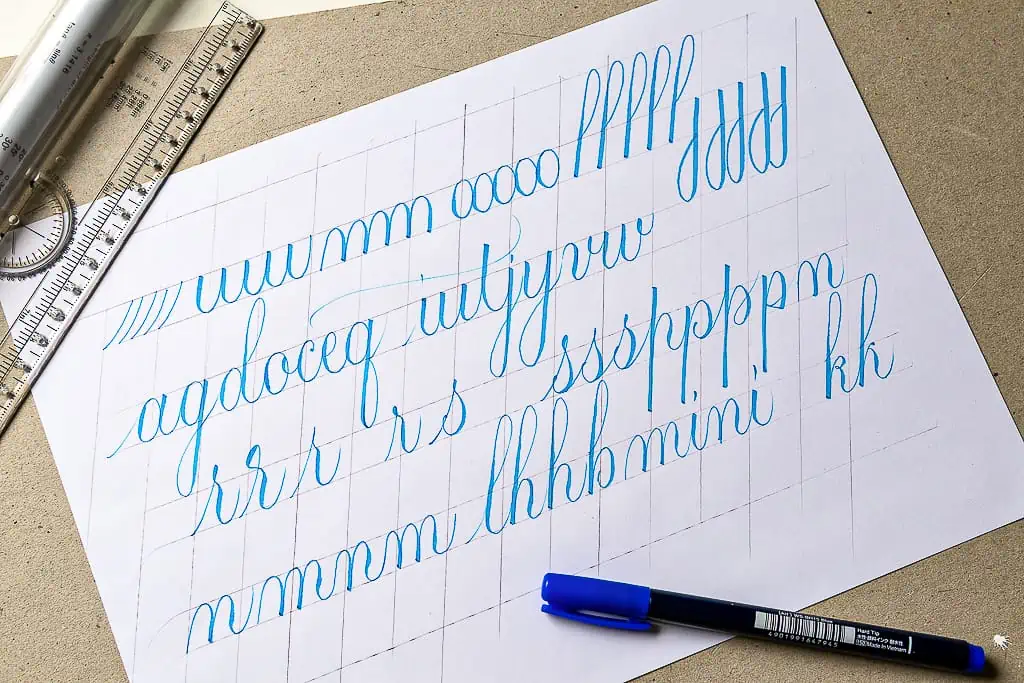
By finished pieces, I mean special calligraphy projects.
Think of artwork you would present in a gallery, sell as a decoration piece, hang on a wall, etc.
Basically, something you’ve put a lot of effort in.
These types of paper usually look and feel nicer; as you might have guessed, they’re more expensive.
On the other hand, we have practice paper that is usually consumed in larger quantities.
Once you get started with calligraphy practice, you’ll realize how much paper you end up using.

That’s why it’s important to find something that is affordable yet suitable for your calligraphy tools.
Let’s begin with the practice paper.
Best practice paper for calligraphy
It’s crucial to pick your calligraphy paper based on the calligraphy tool you’re working with.
It will make all the difference.
Here are some of my recommendations (all link to Amazon).
1. Canson Marker Paper (and other marker/layout papers)
The best all-around calligraphy paper for practice is – The Canson Marker Pad.

Other marker papers will do just fine, but Canson’s offers the best price and quantity, and it’s my top choice for calligraphy practice.
This type of paper is bleed-proof and super smooth.
With this paper, you’ll be able to use various calligraphy pens and inks without issues.
It will work great with –
- Brush pens
- Broad-edged nibs, pens, and markers
- Pointed nibs
- Markers
- Pencils
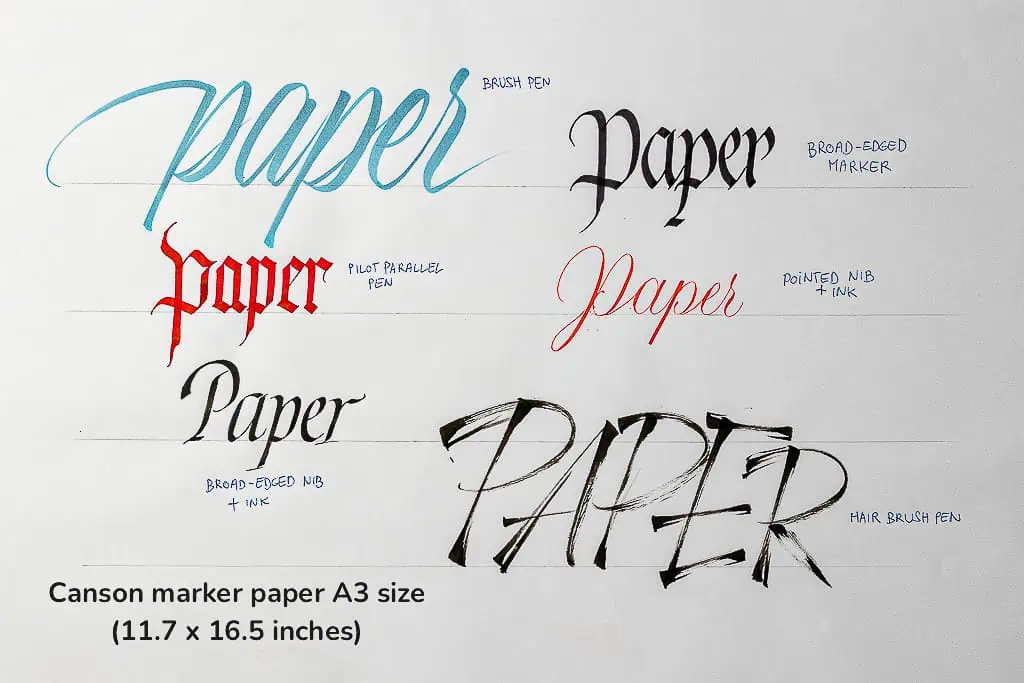
It will also prevent any sort of feathering and bleeding.
Which for me is super important.
I still haven’t encountered a type of ink or pen that feathers on this paper.
Also super important to mention is that the tips of your brush pens won’t fray on this paper.

I know it isn’t easy to see the difference just by looking at the image above.
However, using cheap printer paper will fray and ruin the tips of your brush pens in a matter of days.
I believe that only one side of this paper is coated, so make sure to use the correct one.
You can find it by inspecting each side with a gentle touch.
Another feature of this paper is that it is super thin (only 70gsm).
Because it’s so thin, you can place a guide sheet underneath, so you don’t have to draw them manually every time.
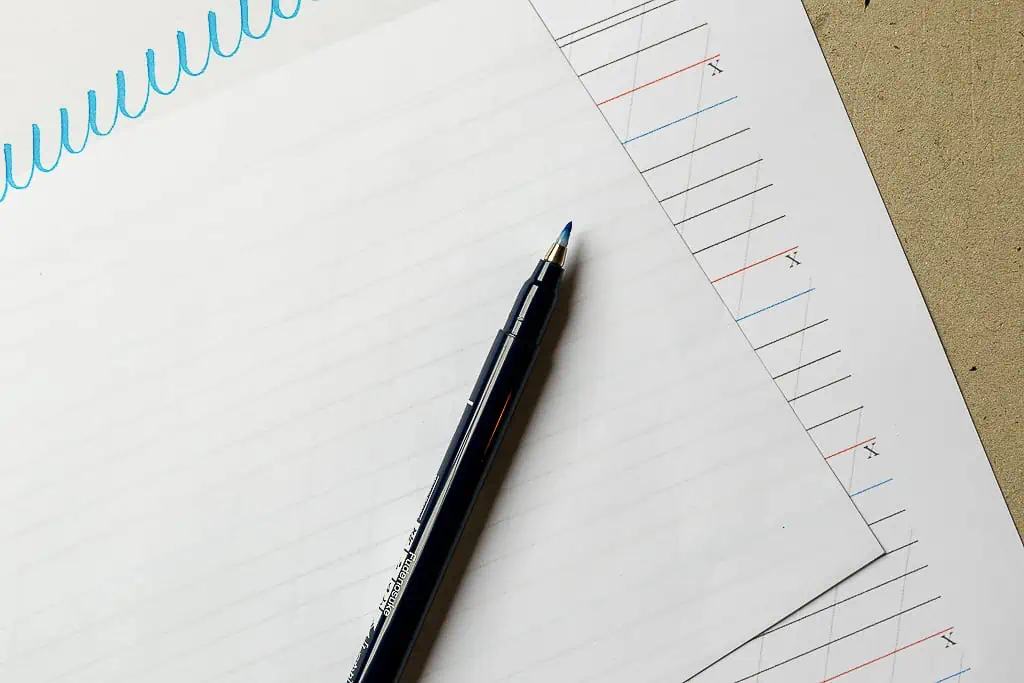
Which is great for streamlining your practice sessions.
You’ll find other brands of bleed-proof marker paper.
But in my experience, Canson offers the best bang for your buck.
The only downside I can think of is the lack of tooth.
Paper tooth is referred to the texture of the paper.
More tooth = more texture (think of watercolor paper).

Having a bit of texture can sometimes be good for calligraphy.
It improves the control of your strokes.
Too much of it can have the opposite effect, same as too little.
2. Rhodia Paper Pads
Another excellent practice paper that works with all three main pen categories is the Rhodia paper pad.
Rhodia is a French-based paper company known for producing high-quality papers.

It’s slightly more expansive than the Canson marker paper, but it’s fantastic to work with.
If you want to work with dip pens or any other pen/marker with heavier ink flow, you won’t experience any feathering or bleeding.
Regarding your brush tips, they won’t get frayed and will last much longer.

The Rhodia paper pads come with different grid samples on the pages.
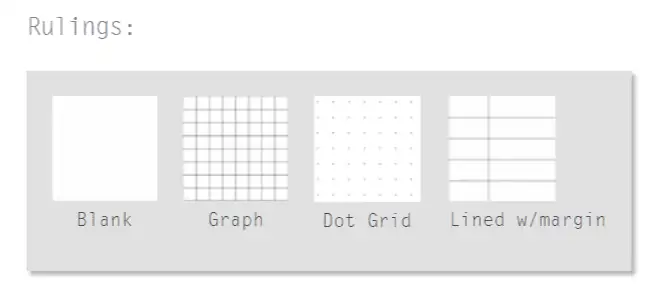
My preferred one is the dot grid, but feel free to pick the one that suits you best.
A worthy mention here is the PAScribe Rhodia pads.

These pads are an absolute dream to work with.
I was actually gifted these by Paul when I visited him in Portugal (humble brag).
3. HP 32 Premium

The HP 32 Premium is one of the most frequent paper recommendations you’ll find online.
It’s a good paper, quite thick (120gsm) and smooth to the touch.
However, I don’t think it’s the best for all calligraphy pens.
For example, working on this paper with a Pilot Parallel Pen, which has a heavy ink flow, will cause some feathering and slight bleeding.

It’s not the end of the world, but I just can’t stand to see my hairlines feather like that.
As for brush pens, they will glide quite smoothly on the HP 32 Premium.
However, the tips of your brush pens will fray over time.
Again, I know it’s hard to spot the difference from the image below, but I’m saying this from experience.

It is cheaper than the two recommendations I made above, but if you have to purchase calligraphy pens more often, it’s not really.
If you plan to exclusively practice calligraphy styles with brush pens, I would stick to either the Canson or Rhodia paper.
The HP 32 Premium will work great with dip pens (both pointed and broad-edged).

If you plan to practice with dip pens, I would definitely recommend this paper.
However, it does depend on the type of ink you’ll work with.
The Sumi ink and gouache will work great with this paper.
Other inks might need their viscosity adjusted with either gum arabic (to market it thicker) or water (to make it thinner).
Either way, this will require a bit of trial and error before getting the right combo.
That goes not just for this paper but for any type as well.
If you live in Europe, you won’t be able to find the HP 32 Premium.
Instead, here we have the HP Color Choice.

Best calligraphy papers for final projects.
When you start looking for papers for final calligraphy projects, you start realizing how beautiful some papers can be.
Also, how expensive 😀
Let’s begin with one of the most common options.
1. Watercolor paper
I would say that watercolor paper is kind of a safe choice.
Widely available and works great with multiple calligraphy pens.

Usually, it’s thick (around 300gsm), giving it a nice feeling when holding it.
An important mention of watercolor paper is the texture.
We can distinguish between hot-press and cold-press watercolor paper.
In short, the cold press will have more texture, and in comparison, the hot press will be smoother.
Underneath, you can see a comparison between the two (Fabriano vs. Hahnemühle).

The difference matters because it might be suitable for one tool but not the other.
For example, a cold press watercolor paper might work well for broad-edged calligraphy.
However, the extra tooth will give you some control issues when working with a pointed nib.
That’s why for pointed nibs I would choose a hot press watercolor paper.
Sometimes (depending on your ink viscosity), it can also give you a very interesting texture to your letterforms.

Felt brush pen tips will also last longer on a smoother surface, like the hot press watercolor paper.
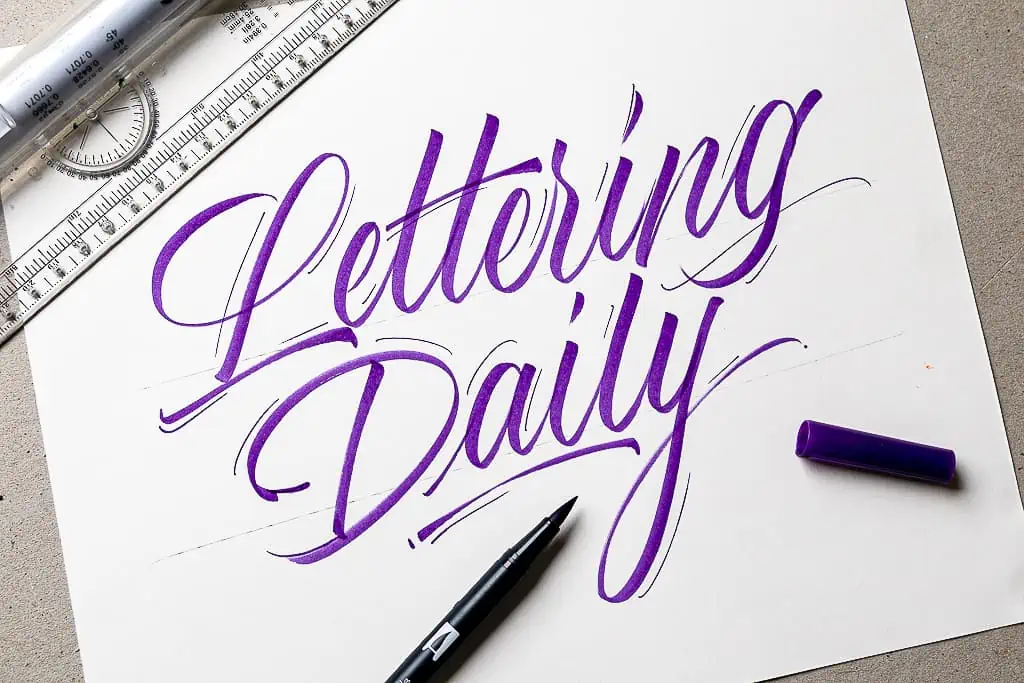
Again, keep in mind the tool you’re working with before you purchase paper.
Some watercolor papers I recommend getting are –
2. Handmade paper
Handmade paper is probably one of my favorites.
It just looks so freaking amazing.
Plus, it comes in various textures, colors, and patterns.

The downside of handmade paper is that some calligraphy tools and inks can cause some issues.
If the handmade paper is very fibrous, it might feather.
If that happens, you can adjust the ink consistency with some gum arabic.
As I mentioned earlier, gouache is also a great alternative since you can easily regulate the consistency of the ink.
The nib might also get caught onto the paper.
However, that could be either because of the ink or the angle of your pen hold.
Pro tip – since this paper is usually quite expensive, make sure to test out the ink and nib on a separate, smaller piece of paper.
Handmade paper I recommend –
- Indian Cotton Paper Co – offers different sizes and envelopes
- Khadi handmade paper
Also, make sure to check your local art stores. I usually find some of the best handmade papers in these shops.
3. Bristol paper
Bristol is a thicker type of drawing paper that is made by gluing together to form multi-ply sheets.

Because of that, it’s usually sold in smaller quantities and for a higher price.
Nonetheless, it’s a fantastic paper for final calligraphy projects.
You can find two types of surfaces on Bristol paper, Smooth or Vellum.
Bristol Smooth – great for pens, inks, and markers. Little to no paper tooth, making it smooth. This version of Bristol is more suitable for final pieces with brush pens, pointed nibs, and even broad-edged pens if that’s what you prefer.

Bristol Vellum – the more textured surface is more suitable for graphite, pencils, charcoal, pastel, crayon, etc. I would pick the Vellum Bristol only if I plan to work with a broad-edged calligraphy pen.
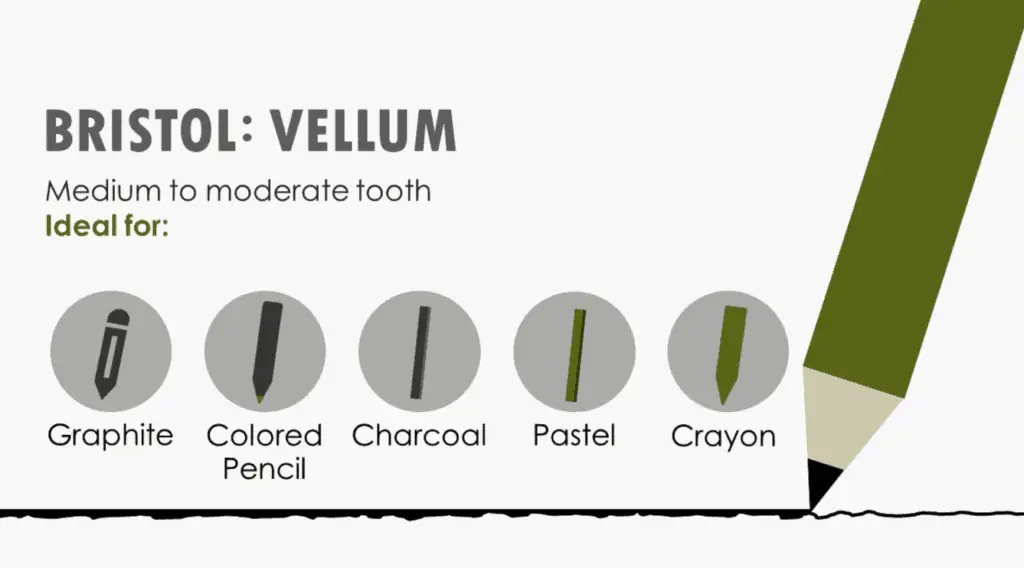
Bristol paper I recommend –
4. Mixed media paper
Think of mixed media paper as a type of hybrid suitable for both wet and dry mediums.

It’s usually a thicker type of paper with a slight tooth.
Personally, I find the amount of tooth on these papers just great for broad-edged and pointed nibs.
I would avoid using felt tip brush pens on this type of paper.
The surface is a bit too rough, and the tips start fraying quickly.
Mixed media brands I recommend –
5. Black & colored paper
Sometimes you want to spice things up and do some calligraphy artwork in different background colors.

I love the strong contrast of white ink on black paper.
Pro tip: For white ink, I recommend trying Dr. Ph. Martin’s Bleed Proof white ink.
That’s why I decided to include a few options for black and colored papers.
I haven’t tried many black/colored papers, but the ones I did and want to recommend are –
The Canson Colorline also offers other paper colors.
You can also try out various colored cardstock.
I got a set of papers from Ikea, which worked fine with pointed and broad-edged nibs and various inks.

However, felt tip brushes are quite sensitive to uncoated papers.
Unfortunately, my brush pens did not last very long with this Ikea paper.
Papers to avoid when doing calligraphy
Some papers are better than others.
Some are just downright horrible to work with.
Like the one you see below.
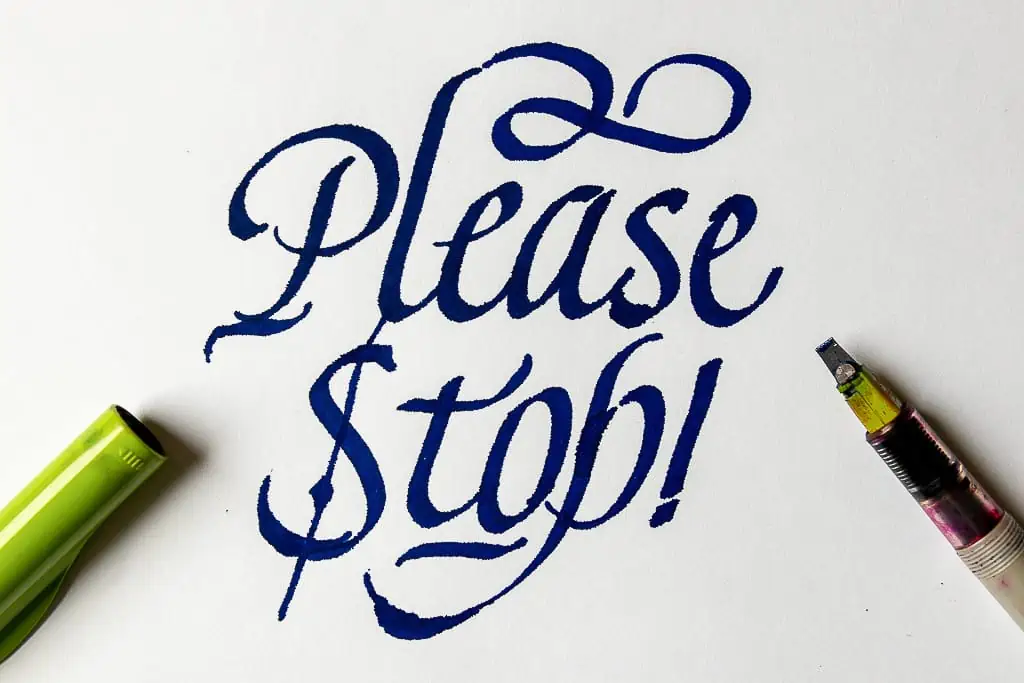
Here are the types of papers I would advise you to avoid getting –
- Photo paper – other terms glossy, enamel, slick.
- Tracing paper – good for lettering, not calligraphy.
- Cheap print paper – ruins your tools, horrible to work with.
- Cheap regular notebooks – not made for calligraphy.
- Certain cardstock – requires testing with tools and inks.
Keep in mind that paper can sometimes be hit-and-miss.
Some might work well with a Pilot Parallel Pen but not with a Tombow Dual Brush Pen.
You might get an awesome and affordable type of paper, or you might end up with something unusable for your calligraphy tools.
Finally, I would stay away from papers/pads labeled as “calligraphy paper.”
They are usually produced for specific types of tools, and some of them come with a grid.
You might think the grid is helpful until you realize it’s not made for the style you want to practice.
Again, calligraphy is an umbrella term with many writing styles and scripts sitting underneath.
Trying to narrow down calligraphy as a single thing is just wrong.
Eco-friendly paper for calligraphy
As you may know, producing paper is not the most sustainable practice, and recycling paper isn’t super straightforward.
On top of that, it’s a consumable material and gets used quickly and in large quantities.
Taking that into consideration, I wanted to include a few suggestions for eco-friendly papers.

The best choice is to purchase paper pads made of recycled paper.
Strathmore has a whole line of different recycled paper pads.
Canson offers one as well.
I haven’t tried all of these papers, but from those I did, I can say that they’re more suitable for pointed and broad-edged nibs than brush pens.
These recycled papers tend to have a bit of a rougher surface which will damage your felt tip brush pens.
FAQ – common questions about calligraphy paper
Final words about calligraphy paper
And there you have it, friends.
I hope this article helped shed some light on the topic of calligraphy papers.
Now I want to hear it from you:
What’s your favorite type of paper for calligraphy?
Or maybe I forgot to mention your favorite paper for calligraphy.
Either way, please let me know by dropping a comment below.
Thanks for reading,
And I’ll see you at the next one!
Pin me!
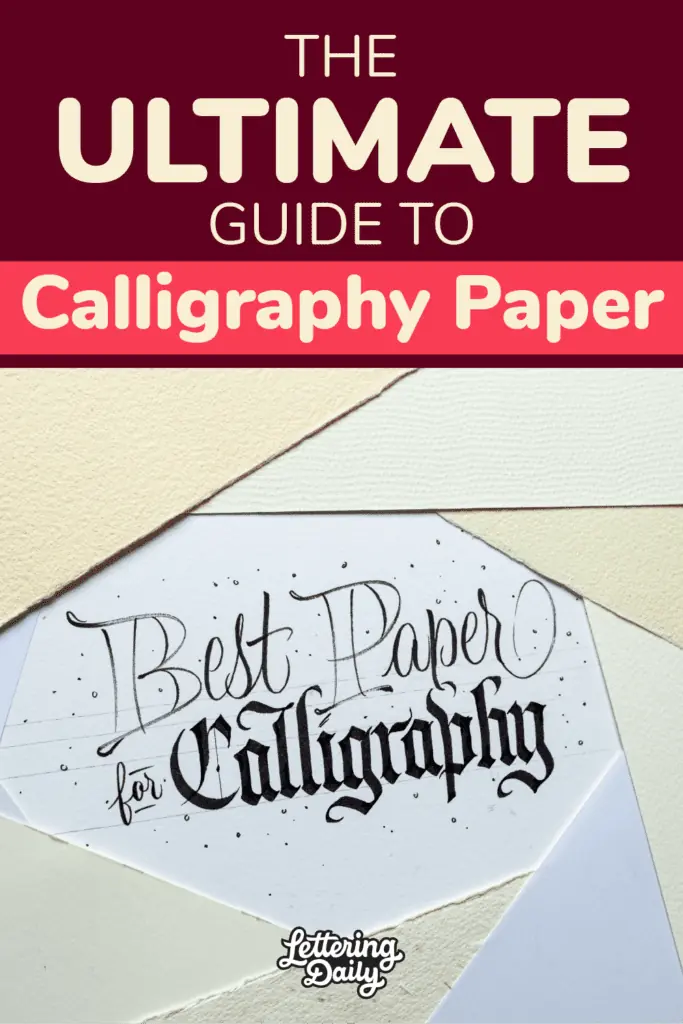
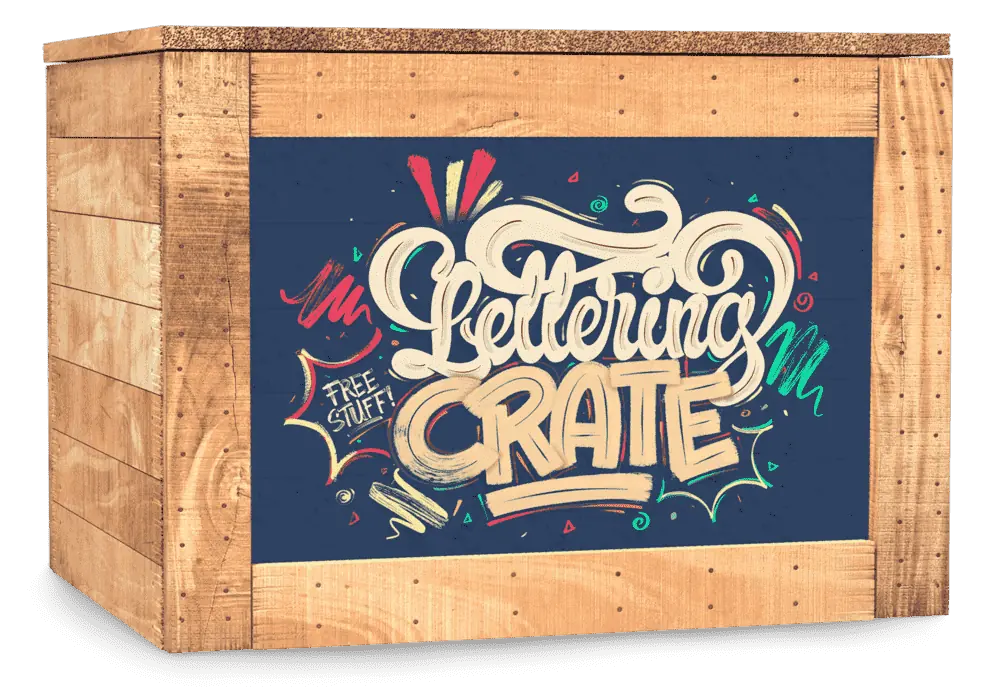
Stay updated with my tutorials and get instant access to the Lettering Crate –
A growing library of free lettering & calligraphy resources that includes –
About the author

Hey, I’m Max Juric, and I’m deeply passionate about calligraphy and hand lettering.
I’ve spent years honing my skills in the art of lettering, working with hundreds of clients from all over the world on design projects such as logotypes, branding, custom lettering, murals, and more.
But my journey doesn’t end there. I’ve also dedicated myself to sharing my knowledge and expertise with others, creating a wealth of resources including tutorials, articles, and podcasts.
It’s been incredibly rewarding to see thousands of people engaging with my content each month. Knowing that I’m helping fellow enthusiasts grow and develop their skills makes me really happy.
Welcome to Lettering Daily, your hub for all things lettering and calligraphy. Whether you’re a seasoned pro or just starting out, I’m here to inspire and guide you on your lettering journey. Stick around, and let’s explore the world of letters together!


Hi, I’m a calligraphy beginner.
Thank you so much for your sharing!
I recently bought a Rhodia notepad(80gsm), and I use Daler Rowney’s calligraphy ink(https://www.daler-rowney.com/calli-calligraphy-ink/). When I write with a bit of pressure, the ink bleeds and feathers on the paper, but on the Rhodia notebook(90gsm) is less bleeding and feathering. Does this mean that this ink is better suited for final artwork (thicker paper) rather than daily practice?
Looking forward to your reply. :-)
Hey Sophie,
Yes it could be due to the ink. Have you tried with a different type of ink?
Thanks for this very comprehensive article, Max—a wealth of great information and advice!
Thank you so much, Drew! I really appreciate it 🙂 What’s your go-to paper for calligraphy?
This is a great and helpful article about what papers to use. I have another question. I submit my calligraphy scans for printing. But I’d like to put embellishments (gold ink) when I get the print back. There are a bunch of papers to choose from the printer- but I made a mistake, and the paper I chose didn’t hold the fine lines- it bleed. Do you have a suggestion for what kind of paper doesn’t bleed that is used by printers- but is still suitable for framing? Thanks!
Hey Lianda, unfortunately I don’t have much experience with printer papers. Your best shot is to purchase a few different types of premium matte printer paper and test them out with your tools before the print. You can also try different types of gold ink, and I would even try to play with the viscosity of that ink by adding some gum arabic to it. What tools do you use to apply the gold ink? Another alternative is to add the gold embellishments before you send them out to print. But that depends on what you use to create your artwork. Let me know a bit more info.
Thanks for your reply. I’ll try the gum arabic recommendation- sounds like a good idea. But I can’t add anything before- it’s just an image file. As you know, there’s no metallic printing available. But in Photoshop, you can make effects that look like gold.
Thank You Max, is a lot and very educational information.
Thank you, Jose! 🙂 I appreciate your comment. What’s the paper you work with the most?
Hey there, what are your thoughts on stone paper?
I tried it once in a notebook, and I was pretty impressed. However, I remember that this particular notebook was pretty expensive. After that, I haven’t looked into it. I remember that a cool feature was that was stain-proof. If you spilled coffee on it, you could just wipe it off with a cloth. I thought that was pretty cool. Maybe I’ll get some and do a test run with various calligraphy tools. Thanks for the suggestion! 🙂
I tried it in a notebook a while ago too, but I found that some ink colours/makes were distorted–that is, the colour of the ink once dry was different from the wet ink as I wrote. I reverted to using pencil only 🙂
Great article, thanks for the tips. Some I had discovered from experience 🙄, others were news and very helpful.
Thank you, Liz! I appreciate your feedback 🙂 What’s your favorite type of paper for both practice and final projects?